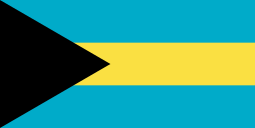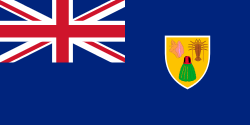Remipedia
| Remipedes Temporal range: Lower Pennsylvanian–Recent | |
|---|---|
 | |
| Speleonectes tanumekes | |
| Scientific classification | |
| Kingdom: | Animalia |
| Phylum: | Arthropoda |
| Subphylum: | Crustacea |
| Class: | Remipedia J. Yager, 1981 |
| Orders & families | |
|
Enantiopoda †
Nectiopoda
| |
Remipedia is a class of blind crustaceans found in coastal aquifers which contain saline groundwater, with populations identified in almost every ocean basin so far explored, including in Australia, the Caribbean Sea, and the Atlantic Ocean. The first described remipede was the fossil Tesnusocaris goldichi (Lower Pennsylvanian), but, since 1979, at least seventeen living species have been identified with global distribution throughout the neo-tropical zone.[1]
Genetic studies have implied that remipedia are the crustaceans most closely related to insects, so much so that they and insects may be considered a "sister group" to all other crustacea.[2]
Description
Remipedes are 10–40 millimetres (0.4–1.6 in) long and comprise a head and an elongate trunk of up to forty-two similar body segments.[3] The swimming appendages are lateral on each segment, and the animals swim on their backs. They are generally slow-moving. They have fangs connected to secretory glands, which inject a combination of digestive enzymes and venom into their prey.[4] They have a generally primitive body plan in crustacean terms, and have been thought to be a basal, ancestral crustacean group. However, Fanenbruck et al. showed that at least one species, Godzilliognomus frondosus, has a highly organized and well-differentiated brain, with a particularly large olfactory area which is a common feature for species that live in dark environments.[5]
Classification
The class Remipedia was erected in 1981 by Jill Yager, in describing Speleonectes lucayensis from the Bahamas.[6] The name "Remipedia" is from the Latin remipedes, meaning "oar-footed".[6] Remipedia is grouped together with Cephalocarida to form the clade Xenocarida.[7] Besides Cephalocarida, the closest relatives of remipedes are probably the Hexapoda (insects and allies), supporting the Pancrustacea hypothesis and the paraphyly of Crustacea.[7][8]
Thirty extant species are recognised as of early 2016, divided among seven families and one genus.[9] All are placed in the order Nectiopoda; the second order, Enantiopoda, comprises the fossil species Tesnusocaris goldichi and Cryptocaris hootchi.[1]
Godzilliidae
- Godzilliognomus Yager, 1989
- Godzilliognomus frondosus Yager, 1989
- Godzillognomus schrami Iliffe et al., 2010
- Godzillius Schram et al., 1986
- Godzillius robustus Schram et al., 1986
- Pleomothra Yager, 1989
- Pleomothra apletocheles Yager, 1989
- Pleomothra fragilis Koenemann et al., 2008
Micropacteridae
- Micropacter Koenemann et al., 2007
- Micropacter yagerae Koenemann et al., 2007
Speleonectidae
- Cryptocorynetes Yager, 1987
- Cryptocorynetes elmorei Hazerli et al., 2009 [10]
- Cryptocorynetes haptodiscus Yager, 1987
- Cryptocorynetes longulus Wollermann et al., 2007
- Kaloketos Koenemann et al., 2004
- Kaloketos pilosus Koenemann et al., 2004
- Lasionectes Yager & Schram, 1986
- Lasionectes entrichoma Yager & Schram, 1986
- Lasionectes exleyi Yager & Humphreys, 1996
- Speleonectes Yager, 1981
- Speleonectes atlantida Koenemann et al., 2009
- Speleonectes benjamini Yager, 1987
- Speleonectes cokei Yager, 2013[11]
- Speleonectes emersoni Lorentzen et al., 2007
- Speleonectes epilimnius Yager & Carpenter, 1999
- Speleonectes fuchscockburni Neighbor et al., 2012[12]
- Speleonectes gironensis Yager, 1994
- Speleonectes kakukii Daenekas et al., 2009
- Speleonectes lucayensis Yager, 1981
- Speleonectes minnsi Koenemann, Iliffe & van der Ham, 2003
- Speleonectes ondinae (Garcia-Valdecasas, 1984)
- Speleonectes parabenjamini Koenemann, Iliffe & van der Ham, 2003
- Speleonectes tanumekes Koenemann, Iliffe & van der Ham, 2003
- Speleonectes tulumensis Yager, 1987
- Speleonectes williamsi Hartke, Koenemann & Yager, 2011[13]
Distribution of extant Remipedia
 Bahamas – Andros, Sweetings Cay, Grand Bahama, Great Exuma, Great Guana Cay (Exuma Cays), Cat Island, Abaco Islands, San Salvador Island
Bahamas – Andros, Sweetings Cay, Grand Bahama, Great Exuma, Great Guana Cay (Exuma Cays), Cat Island, Abaco Islands, San Salvador Island Turks and Caicos Islands – North Caicos, Providenciales
Turks and Caicos Islands – North Caicos, Providenciales Australia – North West Cape (Western Australia)
Australia – North West Cape (Western Australia) Cuba – Matanzas Province
Cuba – Matanzas Province Spain – Lanzarote (Canary Islands)
Spain – Lanzarote (Canary Islands) Mexico – Quintana Roo
Mexico – Quintana Roo Dominican Republic – Distrito Nacional Cueva Taína, Santo Domingo Este.[14]
Dominican Republic – Distrito Nacional Cueva Taína, Santo Domingo Este.[14]
References
- 1 2 Stefan Koenemann; Frederick R. Schram; Mario Hönemann & Thomas M. Iliffe (2007). "Phylogenetic analysis of Remipedia (Crustacea)". Organisms Diversity & Evolution. 7 (1): 33–51. doi:10.1016/j.ode.2006.07.001.
- ↑ Where did insects come from? New study establishes relationships among all arthropods
- ↑ Cameron McCormick (November 10, 2008). "Remipedia". The Lord Geekington.
- ↑ Kaplan, Matt (22 October 2013). "First venomous crustacean discovered". Nature News. doi:10.1038/nature.2013.13985. Retrieved 10 May 2015.
- ↑ Martin Fanenbruck, Steffen Harzsch & Johann Wolfgang Wägele (2004). "The brain of the Remipedia (Crustacea) and an alternative hypothesis on their phylogenetic relationships". Proceedings of the National Academy of Sciences. 101 (11): 3868–3873. doi:10.1073/pnas.0306212101.
- 1 2 Jill Yager (August 1981). "Remipedia, a new class of Crustacea from a marine cave in the Bahamas". Journal of Crustacean Biology. 1 (3): 328–333. doi:10.2307/1547965. JSTOR 1547965.
- 1 2 Bjoern M. von Reumont, Ronald A. Jenner, Matthew A. Wills, Emiliano Dell'Ampio, Günther Pass, Ingo Ebersberger, Benjamin Meyer, Stefan Koenemann, Thomas M. Iliffe, Alexandros Stamatakis, Oliver Niehuis, Karen Meusemann & Bernhard Misof (March 2012). "Pancrustacean phylogeny in the light of new phylogenomic data: support for Remipedia as the possible sister group of Hexapoda". Molecular Biology and Evolution. 29 (3): 1031–1045. doi:10.1093/molbev/msr270. PMID 22049065.
- ↑ Jerome C. Regier, Jeffrey W. Shultz, Andreas Zwick, April Hussey, Bernard Ball, Regina Wetzer, Joel W. Martin & Clifford W. Cunningham (25 February 2010). "Arthropod relationships revealed by phylogenomic analysis of nuclear protein-coding sequences". Nature. 463 (7284): 1079–1083. doi:10.1038/nature08742. PMID 20147900.
- ↑ Stefan Koenemann. "World Remipedia Database". Vlaams Instituut voor de Zee. Retrieved 21 February 2016.
- ↑ Dennis Hazerli, Stefan Koenemann & Thomas M. Iliffe (2010). "Cryptocorynetes elmorei, a new species of Remipedia (Crustacea) from an anchialine cave on Eleuthera, Bahamas". Marine Biodiversity. 40 (2): 71–78. doi:10.1007/s12526-009-0033-4.
- ↑ Yager, J. 2013: Speleonectes cokei, new species of Remipedia (Crustacea: Speleonectidae) from a submerged ocean cave near Caye Chapel, Belize. Zootaxa, 3710(4): 354-362. doi:10.11646/zootaxa.3710.4.4
- ↑ Marco T. Neiber, Finja C. Hansen, Thomas M. Iliffe, Brett C. Gonzalez & Stefan Koenemann (2012). "Molecular taxonomy of Speleonectes fuchscockburni, a new pseudocryptic species of Remipedia (Crustacea) from an anchialine cave system on the Yucatán Peninsula, Quintana Roo, Mexico" (PDF excerpt). Zootaxa. 3190: 31–46.
- ↑ Tamara R. Hartke, Stefan Koenemann & Jill Yager (2011). "Speleonectes williamsi, a new species of Remipedia (Crustacea) from the Bahamas" (PDF excerpt). Zootaxa. 3115: 21–28.
- ↑ https://www.researchgate.net/publication/237770857_Speleonectes_emersoni_a_new_species_of_Remipedia_Crustacea_from_the_Dominican_Republic
External links
 Data related to Remipedia at Wikispecies
Data related to Remipedia at Wikispecies